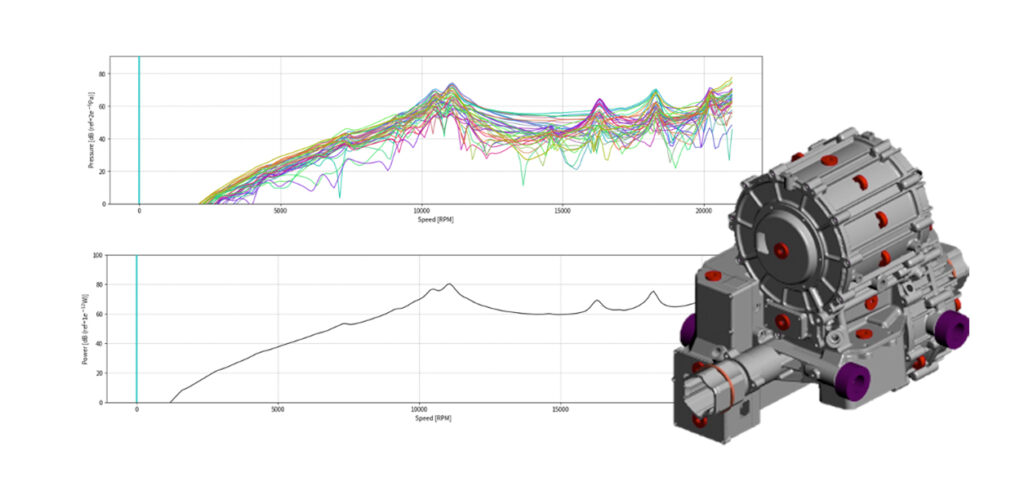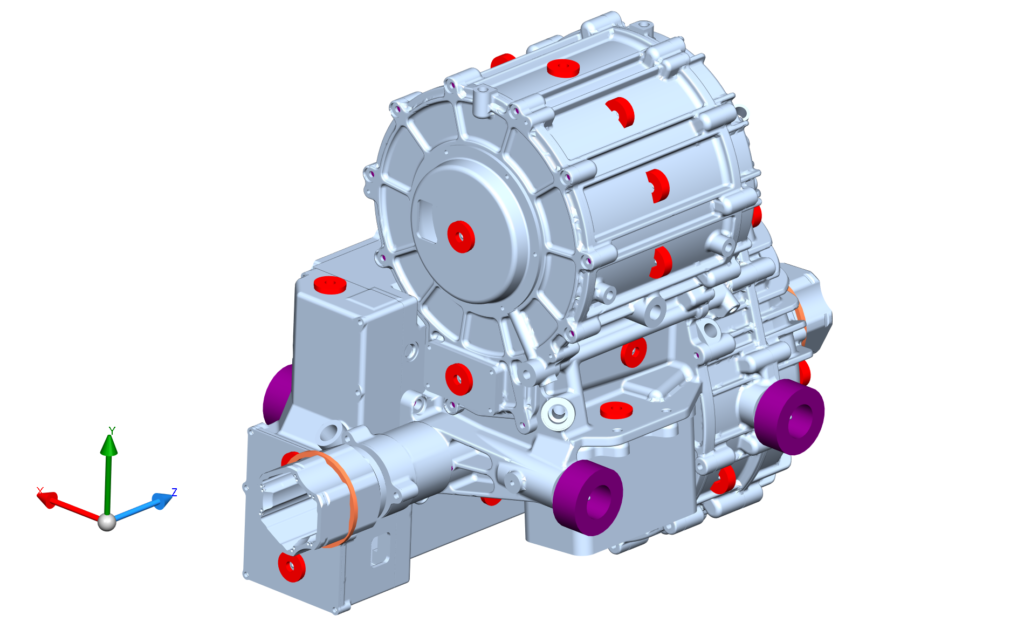UK-based electrified powertrain engineering consultancy Drive System Design (DSD) has developed what it says is a new simulation method that highlights potential NVH issues in electric drive units (EDU) while the design is still model-based.
“The move from ICEs has significantly lowered the acceptable level of NVH in vehicles and as a result, late-emerging and costly NVH issues are now more common in the industry,” said Jordan Craven, senior engineer at Drive System Design. “Highly integrated EDUs with complex interactions between multiple components make it very challenging to predict and identify the source of NVH issues. It is critical for cost and time-to-market that they are identified before committing to physical prototypes.”
DSD developed a system-level modeling approach using component and subsystem correlation tests to accurately simulate NVH behavior. The company says it can accurately model anisotropic components and complex joints, which is critical to understanding how individual components interact at a system level. The approach has apparently been successfully employed on current development projects to identify NVH issues that would have otherwise been missed at this stage.
“Meeting consumer expectations on NVH is becoming increasingly challenging for vehicle manufacturers,” added Craven. “Virtual analysis and validation of the design using our method provide manufacturers with greater confidence that they will meet the necessary targets. It has been proved to significantly reduce the need for post-production fixes that can lead to a compromised product.”
The company will present a paper on this new approach at the 2022 JSAE Annual Congress in Yokohama, Japan. The paper is titled Challenges in optimising system NVH performance of electrified powertrains through developing correlated component models and will be presented in the ‘Latest noise and vibration technologies and sound design technology’ session.



